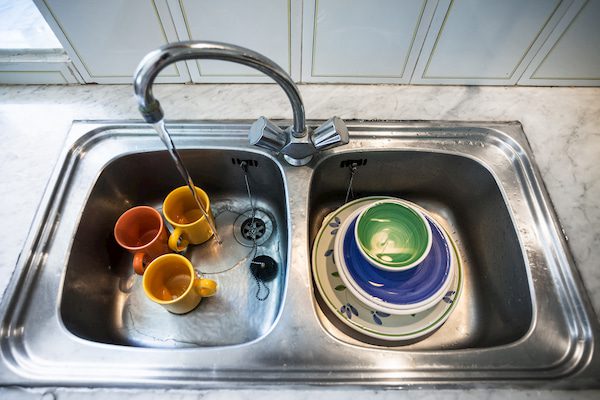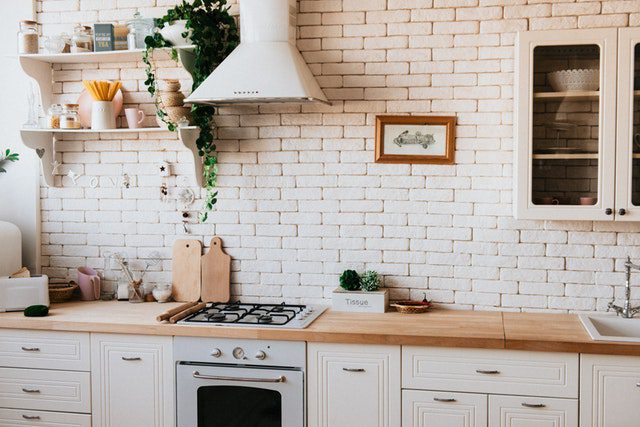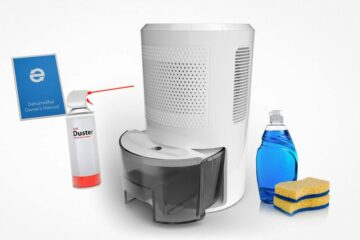Out of all the rooms in your house which is the most prone to moisture?
There are a variety of possible answers, but the kitchen is especially prone to dampness and moisture, due to kitchen sinks, refrigerators, and other sources of moisture.
Having proper ventilation coupled with a reliable dehumidifier will prevent moisture from damaging food and furnishings. The sink, pantry, and cooking area(s) should always have proper humidity prevention. Otherwise, wood and metal furnishings can rot or rust from the effect of excessive moisture, including your kitchen cabinets.
Humidity management is a critically important part of keeping a kitchen area safe for your family.
The Dangers of Humidity in the Kitchen

Excessive humidity can cause a buildup of moisture in your pantry or anywhere else in your home for that matter. You should avoid these problems by controlling humidity levels in areas that are more susceptible to moisture buildup.
The most important targets?
- The pantry
- Kitchen cabinets
- Bathroom cabinets
- And under the sink
How to Reduce Humidity in the Kitchen
A dehumidifier in your kitchen pantry can effectively reduce dampness to a level that will protect you from problems caused by excess moisture. So if you have a lot of moisture in your kitchen cabinets consider a dehumidifier. Thus, you prevent the musty and irritating odor they produce.
Disposable and/or compact renewable dehumidifiers can be used in these areas to combat moisture. Eva-Dry dehumidifiers use odorless, non-toxic components to free your kitchen from excessive moisture. You can also use them anywhere in and around your kitchen, cabinets, and pantry. If you want to learn how to properly use your dehumidifier, we wrote this quick guide just for you!
Water tends to run in and out of kitchen sinks on a regular basis. This creates a risk of moisture building underneath the kitchen cabinet.
Location, location, location
Where you live is an important factor in how humid your house is. Most homes in the southern US have a humidity over 50-60%, well above the recommended 30%.
Kitchens and bathrooms tend to have even higher humidity levels than the rest of the home, thanks to access to running water and the refrigerator. Yes, your refrigerator is affecting the moisture in your kitchen. We often don’t get to see the backside of our fridge, but the coolant system keeping everything cold produces a small amount of moisture that spreads through the room.

Small places with less area like a pantry and your kitchen cabinets also tend to trap moisture in the area, speeding up spoilage. This is why pantries were traditionally in the basement. Older homes would have a cool, dry place where you could safely store your fruit without them turning rotten faster.
If your pantry, fridge, and sink are close together, you’re sucking the life out of your food.
Moisture and Mold in Kitchen Cabinets and Pantry
You need a way to address potential issues with moisture in the kitchen cabinets.
The renewable E-250 from Eva-Dry assists in preventing mold, mildew, and moisture to promote a safe and fresh kitchen area. The E-150 is also an ideal dehumidifier for kitchen cupboards, due to its size.
The E-150 moisture absorbers, are easy-to-use, moisture-absorbing pouches. The E-250 is effective in locations (for areas up to 250 cubic feet) to absorb excess moisture while saving space.
They absorb moisture up to 200% of their own weight and last up to 45 days. When the moisture pouches solidify and become firm, simply discard them and replace them with a fresh pouch. Eva-Dry guarantees that the moisture-aborbers have a maximum shelf life of 18 months from the production date, provided the poly-wrap on the cartons is unbroken and that the cartons have been stored in a clean, dry environment.




Just moved to Costa Rica. Not a lot or any outlets in cupboards., Unsightly cords? Really need help how to store chips, rice, coffee, sundar, etc. Not made of money!
Can o place it anywhere in my cabinet? I have a shelf with spices and another with other goods like flour. Does placement in the cabinet matter?
Where in the cabinet does not matter as long as you allow enough room around the unit to allow for sufficient airflow. To ensure good performance allow an area of .5″ around the unit.